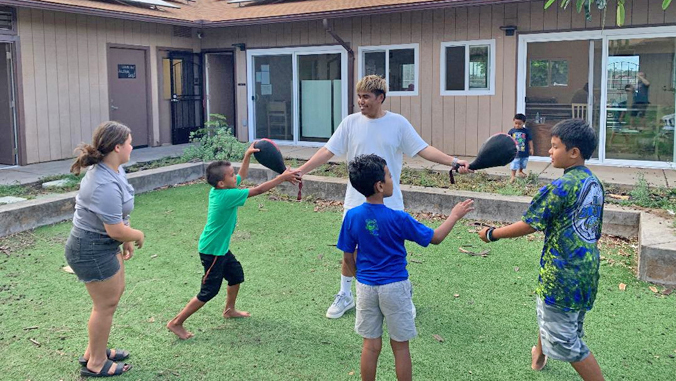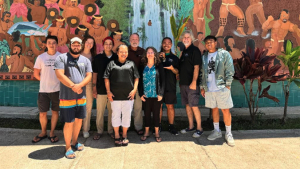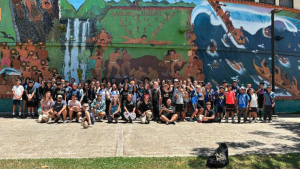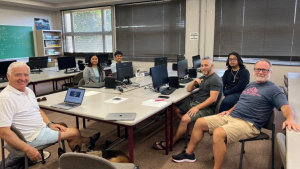
In the aftermath of the devastating Maui wildfires, two University of Hawaiʻi Maui College students are helping their community recover under the guidance of UH Mānoa and UH Maui College faculty members.

Samuel Dameg and Lane Day have been working tirelessly to aid in immediate recovery and contribute to the long-term resilience and STEM education of Maui’s youth. Their efforts, part of a National Science Foundation (NSF) RAPID grant on trauma-informed STEM education, focus on providing educational support and improving facilities for displaced children and families.
“I can’t believe it’s been a year,” Dameg said. “The Lahaina fire was devastating, but it showed the Maui community’s resilience—how people worked together during that time. It also made me realize I need to do something for my community.”
Dameg is an information and computer sciences major specializing in data science and is currently also working on a separate NSF RAPID grant with Maui resident David Eder, a UH Mānoa graduate faculty member in the physics and astronomy department. Day is a business administration major at UH Maui College. Both were personally affected by the fires.
Dameg, who lives in Makawao, has family members who lost their homes and jobs. Day’s mother and sister both lost their home in Lahaina. He lost his West Maui property management position as a result of the fires.
Finding purpose in service

Despite their personal challenges, both students found purpose in community service. Day recalled a pivotal moment at the Ka Hale A Ke Ola (KHAKO) homeless shelter in Wailuku: “The first time I went there, there was a kid, 5–6 years old, just busted through the door… looking for a place to rest. That was the moment when I was like, ‘Ok, here we are, we have the opportunity to enrich these children’s lives.’”
The students’ involvement spans several initiatives. At KHAKO, they offer weekly lessons in math, robotics and kinesiology. Day has also led efforts to remodel the children’s space at the shelter.
“The other day I was at the homeless shelter teaching them robotics. We do some coding, we do math, we also do martial arts,” Dameg explained. “It’s good to see them having fun with it.”
Dameg and Day also participated in a summer camp and assisted at Nāpili Noho, an emergency distribution hub north of Lahaina, providing math and robotics activities for children.
UH creates opportunities

Thomas Blamey, a mathematics professor at UH Maui College and co-principal investigator on the NSF grant, initially recruited the students as volunteers at Nāpili Park Distribution Center. Their roles expanded as they became more engaged with the STEM community.
“UH has done a lot for me,” Dameg said. “Meeting Professor Blamey is what kind of started it. And that’s how I pretty much got into a lot of the grants.”
Day added, “I really owe the University of Hawaiʻi a great deal of gratitude for everything they’ve done for me. Over the past couple of months, I wouldn’t be here without them.”
Both students emphasized the importance of community involvement and resilience.
“If you have the opportunity to help out your community, do it,” Dameg urged. “Look where it landed me. It’s taking me to new, different opportunities to help out.”
“They have been a blessing to UH Maui College and Maui’s struggle to come back better post wildfire disaster. I’m thrilled to follow these gentlemen’s future endeavors,” Blamey said.
—By Marc Arakaki

